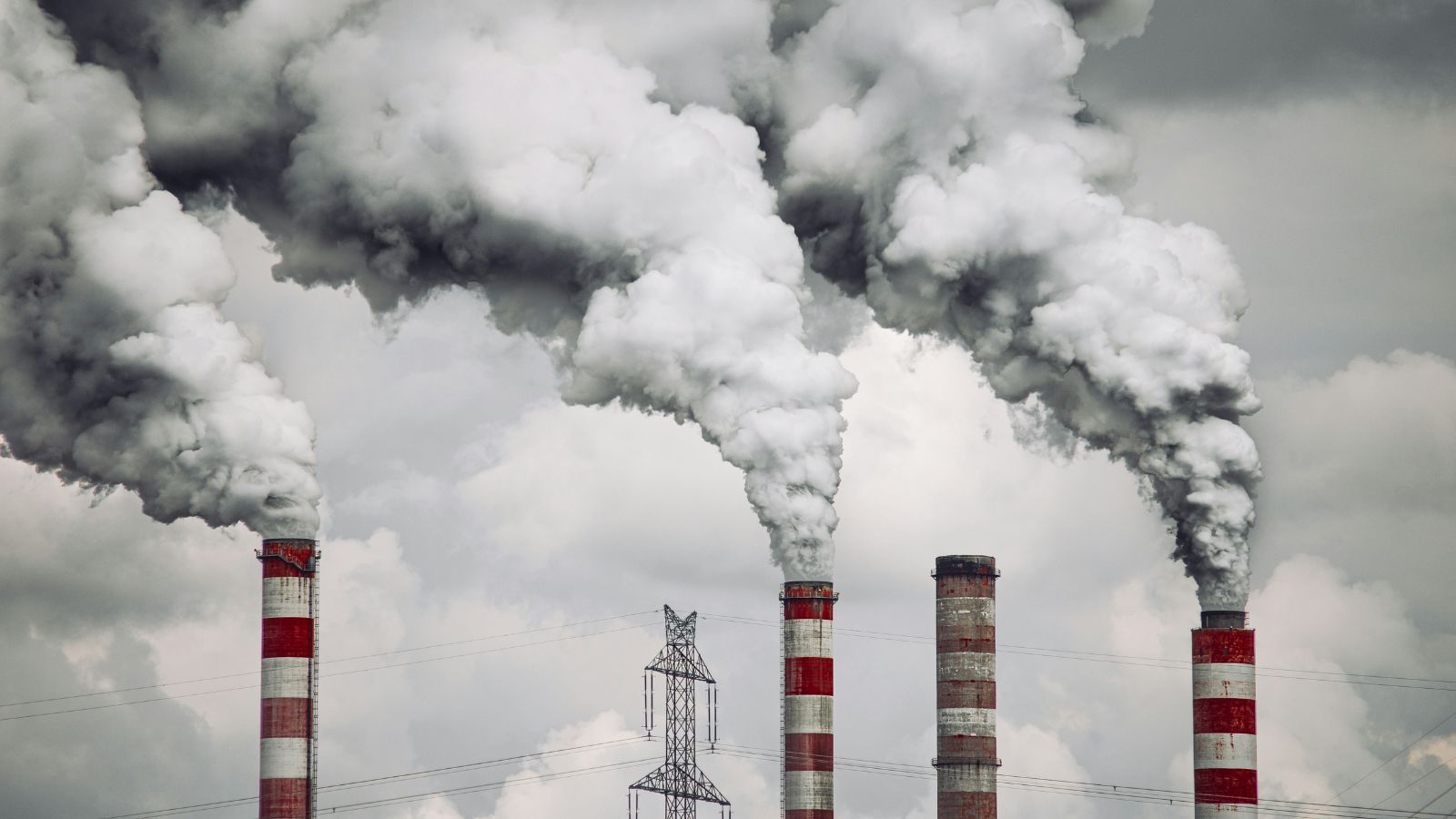Watertown’s Wastewater System Seeing Unusually High Volumes – mykxlg.com

Wastewater System Integrity Report: Sump Pump Discharge and Sustainable Development
Executive Summary
Recent storm events and significant rainfall have resulted in abnormally high flow rates at the Wastewater Treatment Facility. An investigation has identified improper sump pump discharge into the sanitary sewer system as a primary contributing factor. This report outlines the critical need for resident compliance with city ordinances to protect public infrastructure, environmental health, and align with global Sustainable Development Goals (SDGs).
Impact on Sustainable Development Goals (SDGs)
The management of stormwater and wastewater is directly linked to the achievement of several key United Nations Sustainable Development Goals. Non-compliance with proper discharge protocols actively undermines progress in these areas.
SDG 6: Clean Water and Sanitation
- Overloading the sanitary sewer with sump pump water, which is relatively clean groundwater, compromises the system’s capacity to effectively treat wastewater.
- This increased volume heightens the risk of sanitary sewer overflows (SSOs) and backups into residential properties, contaminating homes and the environment with untreated sewage.
- Maintaining the operational integrity of the sewer system is fundamental to ensuring access to safe and reliable sanitation for all community members.
SDG 11: Sustainable Cities and Communities
- The city’s wastewater infrastructure is a critical component of a sustainable and resilient urban environment.
- Illegal connections place undue stress on this infrastructure, threatening its longevity and increasing maintenance costs.
- Protecting the system ensures the community remains safe, resilient, and sustainable, particularly in the face of increased extreme weather events.
SDG 3: Good Health and Well-being
- Sewer backups expose residents to harmful pathogens and contaminants found in raw sewage, posing significant public health risks.
- By preventing these backups, the community collectively contributes to ensuring healthy lives and promoting well-being for all citizens.
Resident Responsibilities and Compliance Directives
To mitigate risks and support community sustainability goals, all residents must adhere to the following directives for sump pump discharge:
- Sump pump water must be discharged onto a permeable surface, such as a lawn or yard, or directed to the street curb.
- Under no circumstances should sump pumps be connected to the sanitary sewer system.
- Properly directing sump pump discharge is a protective measure for your property, your neighbors’ properties, and the entire municipal wastewater system.
Inspection and Enforcement Protocol
To ensure compliance and protect public infrastructure, City staff are undertaking proactive inspection measures.
- Field Inspections: Staff are conducting door-to-door visits to verify the proper valving and discharge location of sump pumps.
- Sewer Main Analysis: A video camera system is being deployed within the sanitary sewer mains to identify the sources of illegal sump pump connections from homes and businesses.
Discharging sump pump water into the sanitary sewer is a violation of City ordinance. Non-compliance may result in enforcement action, including citation as a Class 2 Misdemeanor, which carries a penalty of up to 30 days in jail and a $500 fine. Each day a violation persists is considered a separate offense.
Contact for Inquiries
Resident cooperation is essential for the protection of our shared infrastructure and the achievement of our community’s health and sustainability objectives. For questions regarding this matter, please contact the Wastewater Facility at (605) 882-6244.
1. Which SDGs are addressed or connected to the issues highlighted in the article?
SDG 6: Clean Water and Sanitation
- The article directly addresses the management of wastewater and sanitation infrastructure. The core issue is the Wastewater Treatment Facility being overwhelmed by high flows, which threatens the proper functioning of the city’s sanitary sewer system.
SDG 11: Sustainable Cities and Communities
- The notice is a municipal action aimed at making the city’s infrastructure more resilient to climate-related events like “recent storms and heavy rainfall.” It deals with protecting homes and community infrastructure (“protects your home, your neighbors, and the overall system”).
SDG 3: Good Health and Well-being
- The article implicitly connects to public health by warning about the “risk of sewer backups into homes.” Sewer backups can expose residents to harmful pathogens and contaminants, posing a significant health risk.
2. What specific targets under those SDGs can be identified based on the article’s content?
SDG 6: Clean Water and Sanitation
- Target 6.3: By 2030, improve water quality by reducing pollution, eliminating dumping and minimizing release of hazardous chemicals and materials, halving the proportion of untreated wastewater and substantially increasing recycling and safe reuse globally.
- Explanation: The city’s effort to prevent stormwater (from sump pumps) from entering the sanitary sewer is a direct attempt to improve the efficiency of wastewater treatment. An overwhelmed system can lead to sewer backups, which is a release of untreated wastewater and a form of pollution. By managing inflows, the city aims to ensure all wastewater is properly treated, thus improving water quality.
SDG 11: Sustainable Cities and Communities
- Target 11.5: By 2030, significantly reduce the number of deaths and the number of people affected and substantially decrease the direct economic losses relative to global gross domestic product caused by disasters, including water-related disasters, with a focus on protecting the poor and people in vulnerable situations.
- Explanation: The article describes a response to a water-related stressor (“heavy rainfall”) to prevent a localized disaster (“sewer backups into homes”). These backups directly affect residents and cause economic losses through property damage. The city’s preventative measures are a form of local disaster risk reduction.
SDG 3: Good Health and Well-being
- Target 3.9: By 2030, substantially reduce the number of deaths and illnesses from hazardous chemicals and air, water and soil pollution and contamination.
- Explanation: Preventing sewer backups directly prevents homes from being contaminated with raw sewage. This action reduces residents’ exposure to water pollution and the potential for illnesses associated with such contamination.
3. Are there any indicators mentioned or implied in the article that can be used to measure progress towards the identified targets?
Official SDG Indicators
- Indicator 6.3.1: Proportion of domestic and industrial wastewater flows safely treated.
- Explanation: The article implies this indicator. The primary goal of preventing sump pump discharge into the sewer is to ensure the Wastewater Treatment Facility does not exceed its capacity, thereby maintaining its ability to safely treat all incoming wastewater. A failure to do so would decrease this proportion.
- Indicator 11.5.1: Number of deaths, missing persons and directly affected persons attributed to disasters per 100,000 population.
- Explanation: The article’s preventative measures are aimed at reducing the number of “directly affected persons” by preventing sewer backups in homes. The success of this initiative could be measured by the absence or reduction of such incidents during heavy rainfall events.
Implied Local Indicators
- Number of illegal connections identified: The article states that staff are using a “video camera system” and going “door to door” to find illegal discharges. The number of violations found would be a direct indicator of the scale of the problem and the progress in rectifying it.
- Number of enforcement actions taken: The article mentions that violations may result in a “Class 2 Misdemeanor” and a “$500 fine.” Tracking the number of enforcement actions serves as an indicator of the city’s commitment to resolving the issue.
- Flow volume at the Wastewater Treatment Facility: The facility is seeing “significantly higher flows than normal.” A reduction in these peak flows during storm events would be a direct indicator of the success of the campaign to redirect sump pump water.
4. Create a table with three columns titled ‘SDGs, Targets and Indicators” to present the findings from analyzing the article.
| SDGs | Targets | Indicators |
|---|---|---|
| SDG 6: Clean Water and Sanitation | 6.3: Improve water quality by reducing pollution and improving wastewater management. |
|
| SDG 11: Sustainable Cities and Communities | 11.5: Reduce the number of people affected by water-related disasters and reduce economic losses. |
|
| SDG 3: Good Health and Well-being | 3.9: Substantially reduce illnesses from water pollution and contamination. |
|
Source: mykxlg.com

What is Your Reaction?
 Like
0
Like
0
 Dislike
0
Dislike
0
 Love
0
Love
0
 Funny
0
Funny
0
 Angry
0
Angry
0
 Sad
0
Sad
0
 Wow
0
Wow
0












































































